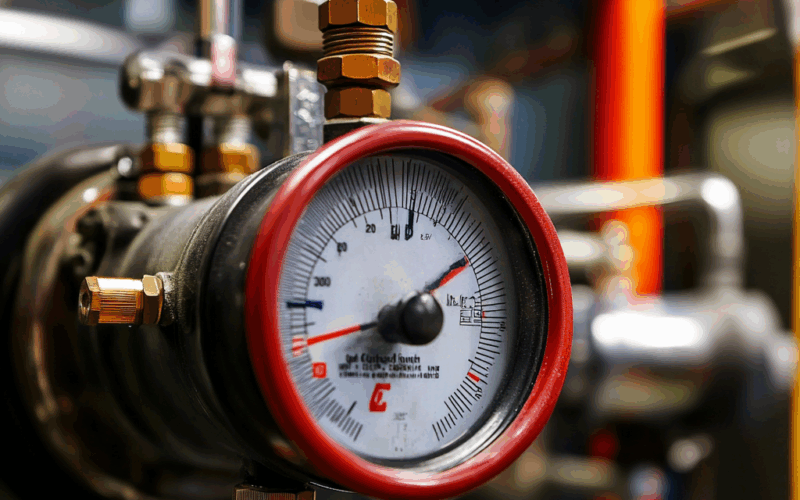Understanding Boiler Burner Capacity
Boiler burner capacity represents the maximum thermal energy output a burner can deliver to satisfy the boiler’s operational requirements. This output is typically measured in BTU/hr (British Thermal Units per hour) or kilowatts (kW), depending on regional standards. The correct sizing of a burner ensures that the boiler operates efficiently and can handle both peak and fluctuating demands. An accurately sized burner maintains optimal combustion conditions and supports the longevity of the system.
A key concept to understand is that burner capacity directly correlates with the energy needs of the system it serves. If the burner is undersized, it will struggle to maintain pressure or temperature, leading to inefficient operation and potential equipment strain. Conversely, an oversized burner will lead to short cycling, where the system frequently turns on and off, reducing fuel efficiency, increasing emissions, and accelerating component wear. Proper sizing balances load requirements with operational efficiency.
Key Factors Affecting Burner Sizing
Several critical factors must be considered when sizing a burner for a boiler. These include the total heating demand, the type of boiler (whether it’s producing steam or hot water), and the specific use case—such as space heating, industrial processing, or domestic hot water supply. Additionally, geographical location plays a major role, especially altitude, which affects air density and, consequently, combustion efficiency.
Environmental conditions like ambient temperature, humidity, and seasonal variation also impact sizing. Another essential factor is burner turndown ratio—the ability of a burner to modulate between its maximum and minimum capacity. A burner with a wide modulation range can adapt better to varying system loads, enhancing performance and fuel savings. Proper burner selection must align not just with design loads but also with the dynamic operational patterns of the entire heating system.
Determining the Boiler Heat Requirement
Before calculating burner capacity, it’s essential to determine the boiler’s total heat requirement. This involves identifying both steady-state and peak load conditions, including space heating, process heating, domestic water loads, and heat losses due to distribution and standby. The requirement is generally expressed in BTU/hr or kW and must reflect real-world operating conditions for accurate results.
Heat requirement calculations should incorporate parameters such as boiler pressure, temperature differential, and, in the case of steam systems, the latent heat of vaporization. For hot water systems, the calculation is typically based on the flow rate and the temperature rise required. Using accurate building heat loss analyses and referencing manufacturer guidelines can provide a realistic load profile, ensuring that burner sizing is based on actual demands, not estimates.
Fuel Type and Efficiency Considerations
The fuel type used in the boiler is a significant factor in calculating burner capacity. Different fuels—natural gas, propane, fuel oil, or biomass—have different calorific values, which influence the amount of energy released during combustion. For instance, natural gas has a lower heating value per unit volume compared to fuel oil, requiring higher flow rates to achieve the same output. This must be carefully considered when sizing burners to ensure sufficient fuel delivery.
Another crucial aspect is burner and boiler efficiency. High-efficiency burners convert more of the fuel’s energy into usable heat, reducing the overall burner size needed for a given load. Combustion efficiency typically ranges between 80% and 95%, depending on design and maintenance. When calculating burner capacity, it’s important to apply the correct efficiency value to ensure accurate fuel input estimates. Ignoring efficiency variations can result in oversizing or undersizing, leading to poor performance and higher operational costs.
Step-by-Step Calculation Method
Calculating burner capacity requires a clear, methodical approach to avoid costly errors. First, determine the required boiler output in BTU/hr or kW based on the building’s or process’s total heat demand, including all losses and peak usage. Then, divide this value by the expected efficiency of the burner and boiler system. Finally, adjust for the heating value of the selected fuel. The standard formula is:
Burner Capacity = Boiler Load / (Efficiency × Calorific Value of Fuel)
After determining this theoretical value, it’s essential to convert it into practical terms, such as fuel flow rate per hour. This often requires using specific conversion factors for each fuel type. For more precise results, reference manufacturer-provided data or burner sizing tools that account for altitude, modulation range, and system type. Reviewing the system’s demand profile and cross-checking with burner specifications helps ensure your selection meets operational requirements without waste or inefficiency.
Common Mistakes and Troubleshooting Tips
Calculating burner capacity might seem straightforward, but several common mistakes can compromise system performance if overlooked. Here are five of the most frequent issues and how to prevent them:
- Failing to adjust for elevation: At higher altitudes, reduced oxygen levels affect combustion, requiring a reduction in burner capacity or additional air adjustments to maintain efficiency.
- Over-reliance on peak demand figures: Sizing for the maximum load alone often leads to oversized systems that operate inefficiently during low-load conditions. Use a balanced load profile that reflects average usage.
- Using outdated or incorrect fuel properties: Calorific values can vary by supplier and fuel composition. Always use verified, up-to-date data from reliable sources when calculating capacity.
- Omitting combustion efficiency from calculations: Neglecting to account for efficiency levels can lead to significant miscalculations in fuel input requirements. Always include realistic efficiency figures based on actual burner performance.
- Skipping thorough system analysis: Basing calculations solely on rule-of-thumb estimates or incomplete data can result in a poorly matched burner. Conduct detailed system load assessments and consult with experienced professionals or manufacturer support.
Proper planning and careful calculations are essential for safe, efficient burner operation. By avoiding these common pitfalls, you ensure your boiler system operates reliably and cost-effectively over the long term.
Question and Answer
Answer 1: It refers to the maximum amount of heat a burner can produce to meet a boiler’s demand.
Answer 2: Boiler load, type, ambient conditions, altitude, and burner modulation range.
Answer 3: By calculating total heating load, system losses, and operating parameters.
Answer 4: Different fuels have varying energy values, affecting the size and fuel flow rate of the burner.
Answer 5: Burner Capacity = Boiler Load / (Efficiency × Calorific Value of Fuel)

